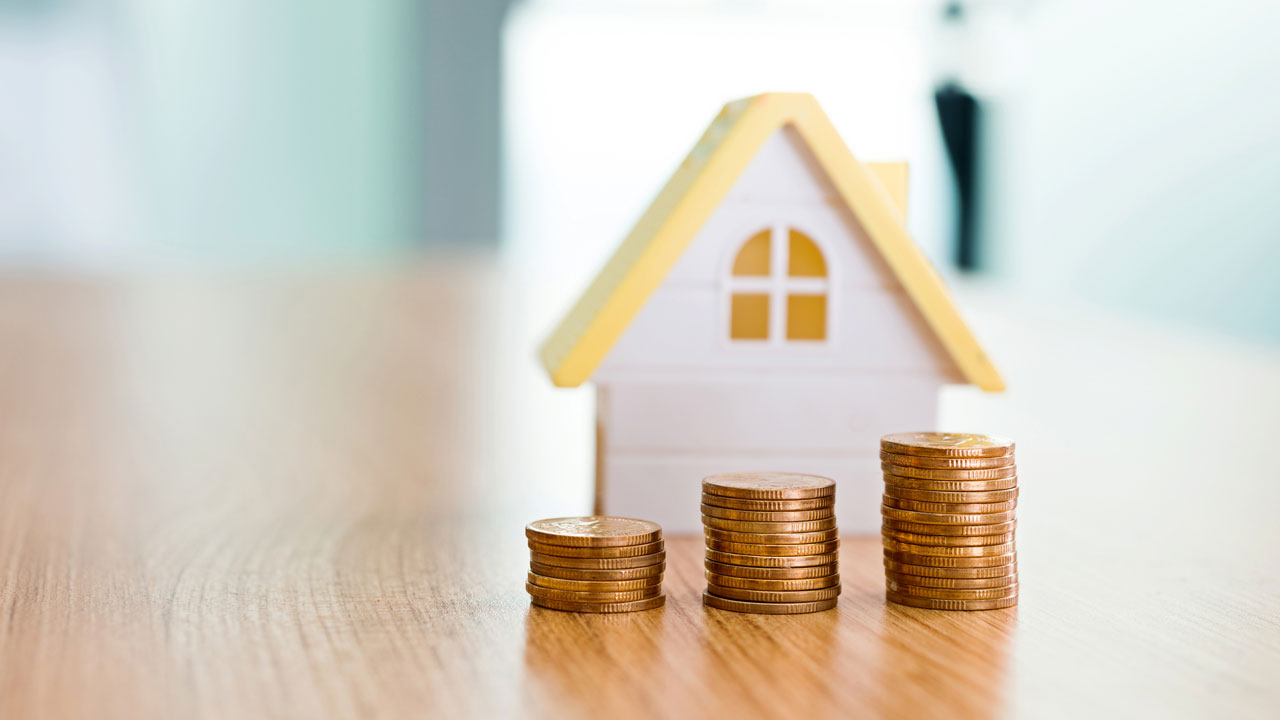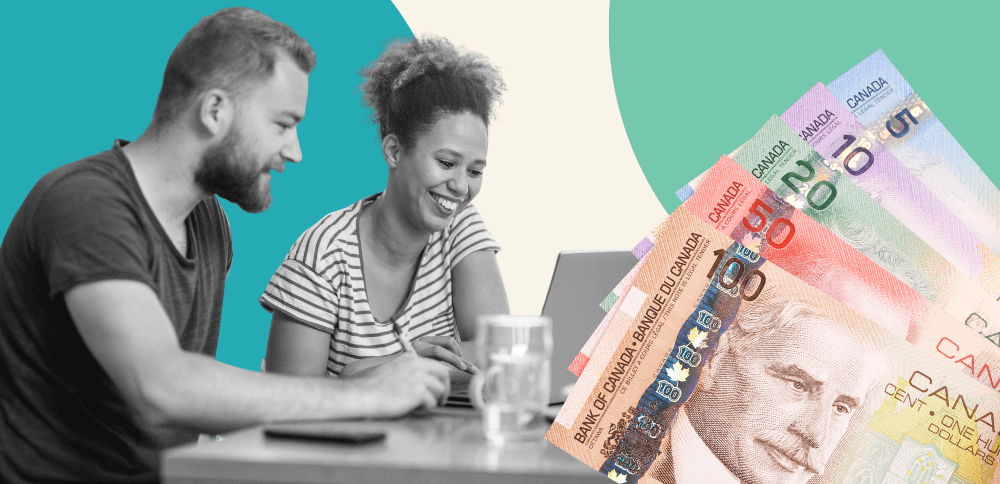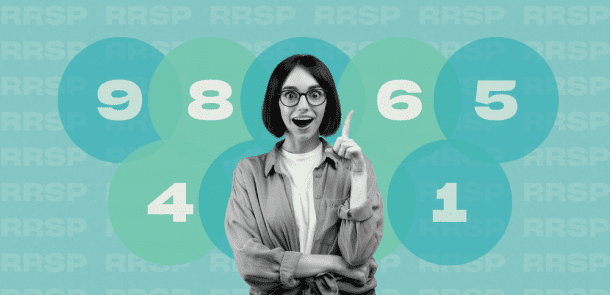Last updated on February 25, 2025
Are you one of the millions of Canadians getting a tax refund this year?
According to the Canada Revenue Agency, Canadians received an average refund amount of $2,295 last year.
If you’re in that group this year, what should you do with your tax refund?
First, it’s important to remember that it’s not a windfall – it’s actually your own money coming back to you. If you get a sizeable refund every year, you might be getting too much tax deducted from your pay cheque. Ask your employer to make sure you’re contributing the right amount towards your tax deduction.
Then again, some folks don’t mind giving the government an interest-free loan because getting a lump sum at the end of the year allows them to save more easily than putting savings aside every month. Does that sound like you? If so, don’t sweat about changing your tax deductions – just make sure you put most of your tax refund to good use.
Here are eight smart things you can do with your tax refund:
1. Pay off your debt.
Paying down debt is usually the first financial priority for most people. Many credit cards are among the highest form of consumer debt, with some interest rates as high as 30% annually. For that reason, paying off or even just making a dent in your debt can be a great use of your tax refund.
2. Establish an emergency (or “life happens”) fund.
Emergency funds vary widely from person to person. The regular recommendation is six months’ worth of expenses, but some prefer having nine months or a year’s worth tucked away. It’s a significant amount, as it should be – it’s what you would be living off if you didn’t have an income for an extended period of time. Ultimately, your emergency fund is about your peace of mind. Design it to fit your specific needs. Lastly, make sure you can easily access these funds and get a good interest rate. See our latest rates here.
Consider directing your tax refund towards your future home by leverage contributions to the First Home Savings Account (FHSA). With a maximum contribution room of $8,000 per year and a lifespan of up to 15 years, the FHSA offers flexibility and long-term planning benefits.
3. Invest in your career.
Is there a skill you’ve been meaning to learn? Maybe you’ve been thinking of joining an association, attending a conference, or taking a workshop?
A small investment in yourself and your career can pay off in increased earning potential and marketability. Read our guest post from artist and entrepreneur Sandeep Johal to learn more about the importance of investing in herself.

4. Contribute to your current or future mortgage.
If you have a mortgage, you could use your tax refund towards it. Saving up to buy your first home? Consider saving your tax refund in an RRSP and using the Home Buyers’ Plan for a tax-free withdrawal to help with the purchase of your first home. As a first-time buyer, you can now access up to $60,000 from your RRSP for your new home, in addition to the benefits of the new First Home Savings Account (FHSA). You can start one or both plans, and once you’ve accumulated $60,000 in your RRSP, consider starting an FHSA to further boost your savings. This way, you can access both the $60,000 from your RRSP and whatever you’ve saved in the FHSA to support your home purchase.
5. Leverage FHSA contributions for future home ownership.
Consider directing your tax refund towards your future home by leverage contributions to the FHSA. An FHSA can be invested to grow and then used towards your first home purchase. If you do not buy a home, don’t worry, you will be allowed to roll your FHSA funds into your RSP regardless of whether you have available RSP room.
With a maximum contribution room of $8,000 per year and a lifespan of up to 15 years, the FHSA offers flexibility and long-term planning benefits. Whether you’re saving for your first home or seeking to optimize your RRSP, the FHSA allows you to utilize your funds strategically without needing extra contribution room.
6. Put some dollars towards your retirement.
Your retirement may seem far away, but it’s never too early to start thinking about it. The earlier you start saving, the more time your contributions have to compound and grow. Both the RRSP and TFSA have lots to offer when it comes to saving for your retirement, and if you’re not sure the best account for you, here’s a blog post that compares an RRSP to a TFSA.
Debating between contributing to your RRSP or paying off part of your mortgage? Why not do both?
Make an RRSP contribution to generate a tax refund for yourself and then use that refund money towards making a payment down on your mortgage principal.
7. Save for your children’s education.
If you have children, consider using your tax refund to contribute to a RESP (Registered Education Savings Plan) to invest in their education. B.C. families have the opportunity to access a total of $8,400 in RESP grants per child. Lower –income families can access more ($10,400 per child), including $3,200 that requires no contribution in order to claim it.
Need more info on RESPs? Check out these five RESP tips every parent should know.
8. Look after your health.
Consider joining a gym or investing in a sport that you enjoy. Maybe there’s a particular fitness, health, stress management or nutrition activity you’ve been eyeing up, and a solution for you to access it, even if you’re on a budget.
We hope these tips helped give you some inspiration for how best to spend your tax refund this year.
Want to check the status of your return? Use the SecureKey Concierge to log into your CRA account with your Vancity online credentials.
And lastly, instead of waiting for a refund, consider adjusting your withholding so you can invest that money now. If you need advice on making adjustments, we’re always here to help!
Check out this CKNW interview about what to do with your tax refund:
The information contained in this article was obtained from sources believed to be reliable; however, we cannot guarantee that it is accurate or complete. This report is provided as a general source of information and should not be considered personal investment advice or a solicitation to buy or sell any mutual funds and other securities.
This blog post provides general information only, and does not constitute financial, accounting, tax, legal or other professional advice. We encourage you to obtain personalized advice from qualified professionals regarding your particular circumstances. Please see our Terms of Use.








